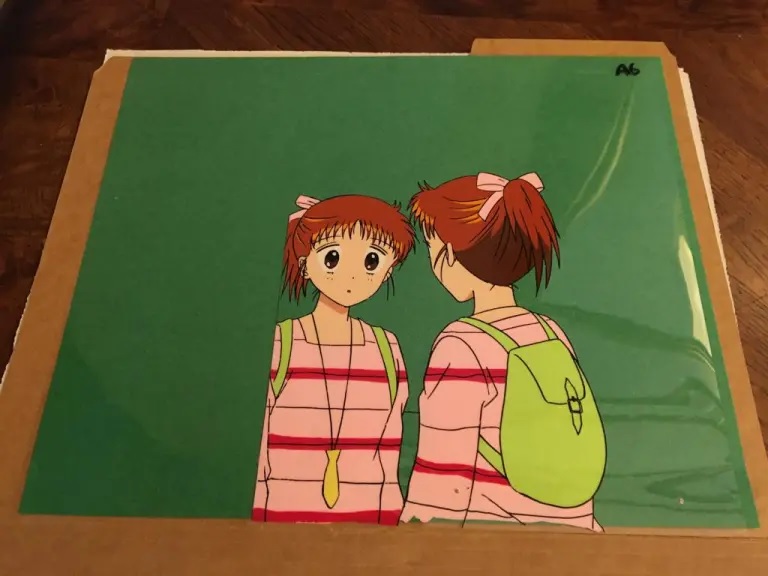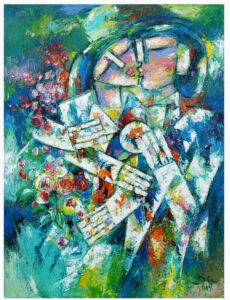For much of their history, anime and manga were seen as disposable entertainment, lacking the serious consideration given to other forms of artistic expression. This perception was particularly prevalent in academic and cultural circles, where they were dismissed as merely fun diversions, without the gravitas or cultural significance to merit preservation or deeper analysis. In fact, back in the 1980s, original animation cels were often discarded en masse, viewed as production waste once a series had finished airing. It wasn’t uncommon for anime studios to fill entire trucks with cels and haul them to the dump, thinking little of their historical value.
However, the status of anime and manga in Japanese society has undergone a radical transformation. Today, they are among the most vibrant and influential segments of Japanese media, reflective of the country’s contemporary values and serving as its most prominent cultural exports. The global proliferation of anime and manga has not only garnered international acclaim but has also prompted a revaluation of their importance as art forms deserving of preservation and scholarly examination.
This shift in perception has led to increased efforts to recognize and maintain these mediums as integral components of Japanese cultural heritage. In response to this newfound acknowledgment, the Japanese government’s Agency for Cultural Affairs, part of the Ministry of Education, Culture, Sports, Science and Technology, has initiated a groundbreaking project to establish a national archive dedicated to anime and manga. On September 30, 2024, the agency held a discussion with key figures in the industry, including Hideaki Anno—creator of the iconic series “Neon Genesis Evangelion”—and manga artist Machiko Satonaka. During the meeting, the agency outlined its vision for the archive, which would serve as a repository for valuable art materials such as anime cels and manga genga (original comic drawings).
The establishment of such an archive is not just about gathering and storing old materials. The agency intends to employ skilled specialists trained in the art of preservation to ensure that these pieces of cultural history are maintained in the best possible condition. With a projected timeline of beginning formal operations within the next six years, the agency envisions the archive becoming a hub for research and education, as well as a means to promote deeper understanding of anime and manga’s cultural impressions.
The urgency of the project stems from the fact that many original materials have already been lost. Due to the rapid production cycles and the prevailing attitudes toward these artforms in the past, much of the foundational artwork that defined early anime and manga has disappeared. Original cels, genga, and other materials were routinely destroyed or sold off in bulk to private collectors. This has created a situation where the surviving materials are scattered and often difficult to access, residing in private collections or in the hands of a few companies that managed to hold onto them over the years.
By establishing a national archive, the Agency for Cultural Affairs hopes to centralize these scattered pieces, creating an accessible and comprehensive collection that can serve both educational and cultural purposes. The proposed archive would not merely store materials in a vault, locked away from public view; rather, it would actively engage with other cultural institutions, both in Japan and overseas, to facilitate exhibitions, research, and public programming. The agency’s goal is to highlight the importance of these materials not just as relics of popular culture, but as works of art that have shaped Japan’s cultural narrative and contributed to its global image.
While a specific location for the archive has yet to be finalized, one potential site under consideration is the National Film Archive’s Sagamihara Branch. This location, already equipped with resources for archiving and preservation, would be a fitting home for a project of this scope. Additionally, the Agency for Cultural Affairs has hinted at the possibility of expanding the archive to include materials from other influential forms of Japanese media, such as video games and “tokusatsu” (special effects) series. This would broaden the scope of the archive, providing a holistic view of Japan’s pop culture history and ensuring that a wide range of media artifacts are preserved for future generations.
The inclusion of video game materials is particularly significant, as the medium has played a crucial role in shaping global perceptions of Japanese culture. The intersection of anime, manga, and video games represents a unique cultural ecosystem where storytelling, visual art, and interactive experiences coexist. Preserving these interconnected art forms within a single institution would offer unparalleled opportunities for research and education, allowing scholars to trace the evolution of narrative and visual style across different media.
One of the primary challenges facing the project is the acquisition of materials. Much of the original artwork, particularly from older series, resides in private collections or is held by publishing companies that may be reluctant to part with these valuable assets. The Agency for Cultural Affairs will likely need to engage in delicate negotiations, offering incentives or assurances that the materials will be preserved and displayed with the utmost respect and care. Given the rarity of some items and the high demand among collectors, securing a diverse and representative collection will be no small feat.
Another challenge lies in the logistics of preservation. Animation cels, genga, and other materials are notoriously fragile, susceptible to damage from environmental factors like light, humidity, and temperature fluctuations. The archive will need to be equipped with state-of-the-art preservation technologies and staffed by experts in conservation to ensure that these artifacts are kept in optimal conditions. This focus on preservation will not only protect the physical integrity of the materials but will also enable long-term research and exhibition opportunities.
Despite these challenges, the project presents a unique opportunity to elevate anime and manga to their rightful place within the canon of Japanese art and culture. By creating an archive dedicated to these mediums, the Agency for Cultural Affairs is making a bold statement about their value and significance. The archive would serve as a testament to the creativity and innovation of countless artists, animators, and creators who have contributed to the development of anime and manga as respected art forms.
As the project moves forward, the Agency for Cultural Affairs will need to continue engaging with industry stakeholders, private collectors, and the general public to build support for the archive. It will be crucial to communicate the importance of preserving these materials, not just as nostalgic artifacts, but as cultural treasures that provide insight into Japan’s history, society, and values.
In doing so, the archive could become a model for other countries with vibrant animation and comic industries, demonstrating the importance of preserving popular culture as a vital component of national heritage. Through partnerships with international institutions, the archive could facilitate cross-cultural exchanges, fostering a global appreciation for the unique artistic achievements of anime and manga.
The involvement of figures like Hideaki Anno underscores the gravity of this undertaking. As a creator whose work has had a profound influence on both Japanese culture and global perceptions of anime, Anno’s participation lends credibility and urgency to the project. His endorsement signals that this archive is not just a bureaucratic exercise, but a meaningful effort to honor the legacy of anime and manga and to ensure their continued relevance for future generations.
The proposed national archive of anime and manga represents a crucial step in recognizing and preserving the cultural value of these art forms. By creating a dedicated space for the collection, preservation, and exhibition of animation cels, manga genga, and potentially even video game materials, the Agency for Cultural Affairs is paving the way for a deeper understanding of Japan’s pop culture history. With careful planning and broad support, the archive has the potential to become a landmark institution, safeguarding the legacy of anime and manga while celebrating their contributions to global culture.
No comments yet.







